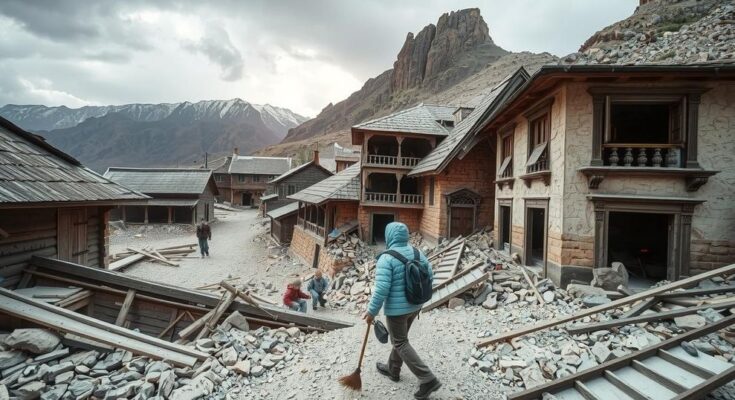A severe earthquake of magnitude 6.8 struck Dingri, Tibet, on January 7, resulting in at least 126 fatalities and severe damage to buildings. Rescue operations are ongoing, hampered by harsh winter conditions, with significant portions of the village infrastructure reported as destroyed. President Xi Jinping has urged extensive rescue efforts and support for the affected population.
A significant earthquake struck the rural county of Dingri, located in southern Tibet, at approximately 9 a.m. local time on January 7. The quake, reported to be of magnitude 6.8 by China’s national earthquake agency and 7.1 by the United States Geological Survey, resulted in substantial destruction. At least 126 individuals have lost their lives, while 188 have sustained injuries, as confirmed by the latest reports from the state-run Xinhua News Agency. The region experienced extreme cold, with temperatures plunging to -18ºC at night, complicating rescue efforts amid potential aftershocks.
In the immediate aftermath, rescue teams, including thousands of soldiers and emergency workers, commenced efforts to retrieve survivors from the collapsed structures. The impact of the quake has been profound, with estimates indicating that 80-90% of homes in the most affected areas have been devastated. Images from national television and social media exhibit the extent of the destruction, showcasing ruined houses reduced to rubble and bodies trapped beneath debris. During the ongoing rescue operations, China’s President Xi Jinping emphasized the importance of minimizing casualties and the necessity of relocating those impacted by the disaster.
Tibet, an autonomous region of China, is situated in a seismically active zone, making it susceptible to earthquakes. The January 7 quake struck Dingri, a rural county near Mount Everest, affecting a densely populated area where thousands resided within a close radius of the epicenter. The region’s geographical conditions, coupled with harsh winter temperatures, pose significant challenges to rescue operations, further complicating responses to natural disasters in these remote areas. The Chinese government, aware of both the humanitarian and infrastructure implications of such incidents, typically mobilizes substantial resources to address the aftermath of earthquakes and provide support to affected civilians.
In summary, the recent earthquake in Dingri, Tibet, has resulted in catastrophic damage and significant loss of life. With the destruction of homes leaving many individuals vulnerable to the elements, the coordinated response from rescue teams is ongoing amid challenging weather conditions. President Xi Jinping’s directive calls for heightened efforts to rescue survivors and assist those affected, underscoring the importance of immediate humanitarian aid in the wake of this tragedy.
Original Source: www.lemonde.fr




